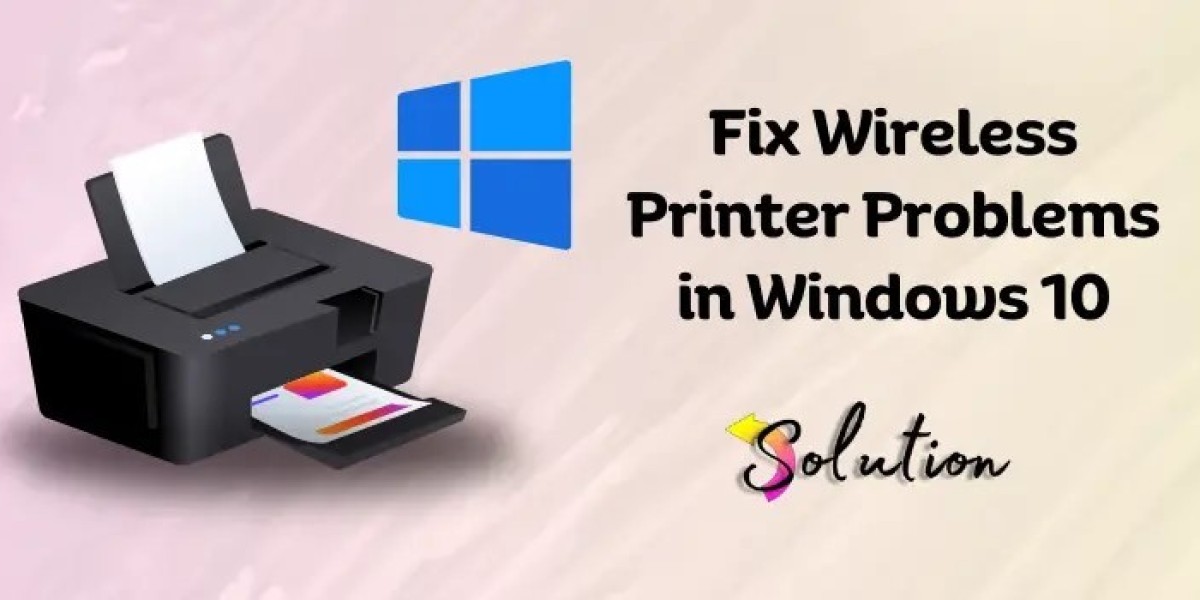Wireless printers have revolutionized the way we print, but printer problems in Windows 10 can disrupt your workflow. In this comprehensive guide, we walk you through effective solutions to Fix Wireless Printer Problems in Windows 10 and ensure seamless printing experiences.
Common Wireless Printer Problems in Windows 10
Before diving into solutions, it's crucial to recognize common issues users face:
Printer not detected by Windows 10
Printing jobs stuck in queue
Printer goes offline frequently
Slow or incomplete printing
Wi-Fi connectivity problems
Understanding these issues will help in applying the correct fix swiftly.
Step 1: Ensure Proper Wireless Connectivity
The foremost requirement for a wireless printer is a stable Wi-Fi connection. Follow these steps:
Restart your router and printer to refresh connections.
Ensure the printer is connected to the correct network.
Verify that your PC and printer are on the same Wi-Fi network.
Move the printer closer to the router to improve signal strength.
If the network is weak or unstable, printing issues are inevitable.
Step 2: Check the Printer Status in Windows 10
Sometimes, Windows 10 sets printers to an offline state unintentionally. To resolve this:
Open Settings > Devices > Printers & scanners.
Select your printer and click Open queue.
Make sure Use Printer Offline is unchecked.
Cancel all stuck printing jobs and try again.
Keeping the printer online is crucial for smooth operations.
Step 3: Update or Reinstall Printer Drivers
Outdated or corrupt drivers are a frequent cause of wireless printer issues. Here’s how to update:
Press Windows + X and choose Device Manager.
Expand Printers and right-click your printer.
Select Update driver > Search automatically for updated driver software.
If updating fails:
Visit the printer manufacturer’s website.
Download the latest driver for Windows 10.
Uninstall the current driver and reinstall the new one.
Keeping drivers updated ensures compatibility and performance.
Step 4: Use Windows Troubleshooter
Windows 10 provides built-in troubleshooting tools:
Go to Settings > Update & Security > Troubleshoot.
Click Additional troubleshooters.
Select Printer and run the troubleshooter.
The system will automatically detect and resolve common printer problems.
Step 5: Configure the Correct Printer Port
Incorrect printer port settings can cause communication issues:
Open Control Panel > Devices and Printers.
Right-click your printer and select Printer properties.
Navigate to the Ports tab.
Make sure the correct TCP/IP port is selected.
Choosing the right port facilitates seamless wireless printing.
Step 6: Set Printer as Default
Multiple printers can confuse Windows 10. Setting your primary printer as default helps:
Open Settings > Devices > Printers & scanners.
Select your printer and click Manage.
Click Set as default.
Ensuring the right default printer avoids unintended errors.
Step 7: Disable Firewall or Antivirus Temporarily
Firewalls and antivirus software can block printer communication. To test:
Temporarily disable your firewall or antivirus.
Try to print a test page.
If printing works, configure firewall settings to allow printer traffic.
Note: Always re-enable security software after testing.
Step 8: Reset Print Spooler Service
The Print Spooler service manages print jobs. If it becomes corrupt:
Press Windows + R, type services.msc, and hit Enter.
Find Print Spooler.
Right-click and select Restart.
Alternatively, stop the service, delete print jobs in C:\Windows\System32\spool\PRINTERS, and start the service again.
Resetting the spooler often resolves stubborn issues.
Step 9: Manually Add Wireless Printer
If Windows 10 doesn't automatically detect your printer:
Go to Settings > Devices > Printers & scanners.
Click Add a printer or scanner.
If your printer isn’t listed, select The printer that I want isn’t listed.
Choose Add a printer using a TCP/IP address or hostname.
Enter your printer’s IP address.
Manually connecting ensures the device is properly recognized.
Step 10: Update Windows 10
An outdated Windows system can cause hardware compatibility issues:
Open Settings > Update & Security > Windows Update.
Click Check for updates.
Install any available updates.
Keeping Windows 10 updated enhances device compatibility and security.
Advanced Solutions for Persistent Problems
If basic troubleshooting fails, consider advanced measures:
Reset network settings on the printer.
Reinstall printer software completely.
Assign a static IP address to the printer.
Upgrade firmware via the manufacturer’s website.
Contact technical support if hardware issues are suspected.
Taking decisive actions can restore full functionality.
Best Practices for Maintaining Wireless Printers
To avoid future issues:
Regularly update firmware and drivers.
Keep printer software up to date.
Use a stable, strong Wi-Fi signal.
Perform routine printer maintenance (e.g., cleaning print heads).
Preventative care leads to long-term reliability.
Conclusion
Fixing wireless printer problems in Windows 10 demands a methodical approach. By following the above detailed steps, you can efficiently diagnose and solve almost any issue, restoring your printer to full functionality. Whether it's network problems, driver issues, or system misconfigurations, addressing the root cause is key to maintaining a seamless printing experience.









